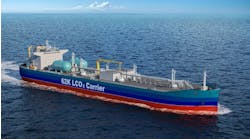Kevin Crisafulli
ARC Advisory Group
ARC Advisory Group research indicates that remote operations management (ROM) is one of the fastest growing segments in the process automation business. Even so, hurdles must still be overcome for users in challenging upstream oil and gas environments to implement a successful remote operations management strategy and realize all the benefits.
Remote applications
Due to their unique nature, many of the remote operations management solutions now in place are highly customized and not easily configurable. In addition, many organizations maintain an "if it isn't broke, don't fix it" approach to asset management. In 2007, Foundation Fieldbus began to lay out a project that would extend the functionality and infrastructure of Foundation Fieldbus to remote applications through remote I/O and wired HART. This was then expanded to include a wireless backhaul network capability and integration of leading industrial wireless networks such as ISA 100.11a and WirelessHART. The Foundation hopes to finalize the specification within the 2012 calendar year to extend its capabilities to countless wired and wireless devices installed in some of the world's harshest and most remote locations. Foundation for ROM aims to allow users to implement predictive and preventive maintenance strategies for their remote assets that previously were unable to support them. Whether operating on a wired or wireless network, users will be able to pull device data into the Foundation Fieldbus infrastructure, which can provide a single source of data management, diagnostics, alarms and alerts, data quality control, control-in-the- field capability, and object-oriented block structure. In this manner, Foundation for ROM helps address various challenges in upstream oil and gas applications.
Evolving needs in harsh environments
End users are beginning to recognize the potential benefits of extending their process automation systems into remote locations. Traditional remote terminal unit (RTU)-based SCADA systems typically used in today's remote operations management applications often require massive amounts of customization, are not easily configurable, and data from intelligent devices may not be easily accessible when needed due to the lack of direct, bidirectional digital access for diagnostics.
Operating companies are growing more concerned with the prospect of deploying their already depleted and often undertrained staffs to remote locations. These remote locations can be expensive to get to and dangerous to work in. The idea of reducing the number of personnel deployed in these regions becomes attractive, since it can reduce operational costs while increasing safety.
An abundance of challenges
The workforce is shrinking, taking knowledge with it at an astonishing rate. This creates a "trickle down" effect to even more challenges. Most users find their operations and maintenance staffs reduced through either layoffs or retirements, making knowledge retention a major concern.
Ever-changing technology forces users to determine when and how to invest to obtain maximum value.
Perhaps the most difficult obstacle to overcome is cost. Projects are not only bigger than ever, but they are also being developed for remote locations that are difficult and expensive to access. Pipeline projects, deep sea offshore platforms, and gas processing plants dot the globe. These massive projects are inherently more complex and difficult to manage, increasing capital costs. According to industry sources, engineering costs for related industries are on the rise as well. End users look for shorter commission and handover time and faster optimum production time, all while reducing engineering costs.
Foundation for remote operations management adds to and extends the Foundation Fieldbus specification to support both wired and wireless infrastructure for remote assets and applications. Foundation for ROM provides a direct link to device data and diagnostics through an open path for integration with multiple wired and wireless networks. These include traditional remote I/O, ISA 100.11a, and WirelessHART. Foundation for ROM not only allows access to those data and diagnostics, it also allows it to be placed into the Foundation Fieldbus environment for data management and data quality. Reliability, safety, and security are key drivers for monitoring remote locations and devices. Effective remote operations capabilities enable operating companies to minimize field travel and operational costs while dramatically improving the safety and efficiency of operations.
Foundation for ROM devices
The Foundation for ROM specification can be embedded in an array of products, including remote terminal units, controllers, and remote I/O modules. Once the specification is embedded in a device, its functionality expands to reflect the combination of traditional functionality found in wireless gateways, process controllers, and RTUs. These devices provide the protocol translation functionality of a gateway, but go beyond this with the ability to represent the device as a transducer block in the Foundation Fieldbus infrastructure, providing data management, alarms and events, data quality, function block structure, and other functionality.
Once the specification is complete in 2012, Foundation for ROM devices will have to pass through the Fieldbus Foundation's rigorous testing and registration program to ensure interoperability.
Real-time management
Any technology is only as good as the value it provides. The key value of Foundation for ROM is the ability to serve as an enabler for real-time remote operations management. With Foundation for ROM, users can diagnose, either locally or remotely, the condition of their automation assets. While users deal with shrinking operations and maintenance personnel and assets being deployed in remote locations, remote operations management is quickly becoming a critical application.
Unlike most other solutions for remote operations management, Foundation for ROM is highly configurable, reducing the need for customization, which can reduce overall implementation costs significantly. At the field device level, utilizing analog technology results in unnecessary work processes due to the lack of direct, bidirectional digital access to devices for commissioning and diagnostics. Even when digital devices are used, proprietary technology at the application and network levels often means that much of the data collected from intelligent devices may be difficult, if not impossible, to retrieve. Instrumentation engineering alone can account for 20% of a user's automation project costs.
The diagnostics and function block capabilities available in the Foundation Fieldbus environment have helped many users avoid unscheduled downtime. Utilizing the predictive diagnostics functionality included in Foundation for ROM technology, users can develop proactive predictive maintenance strategies to help avoid unnecessary maintenance trips to the field.
Foundation for ROM can integrate with many functional areas typically encountered in remote operations, including asset health monitoring, safety interlocks, fire and gas detection, and video surveillance. The move to incorporate a variety of wired and wireless devices and network with the overall Foundation for ROM will enable users to integrate all their process automation assets – both inside and outside the plant – seamlessly into a single framework for control, diagnostics, and data management. ARC believes that this has the potential to reduce both implementation and operational costs significantly, while further enhancing safety.
Offshore Articles Archives
View Oil and Gas Articles on PennEnergy.com


